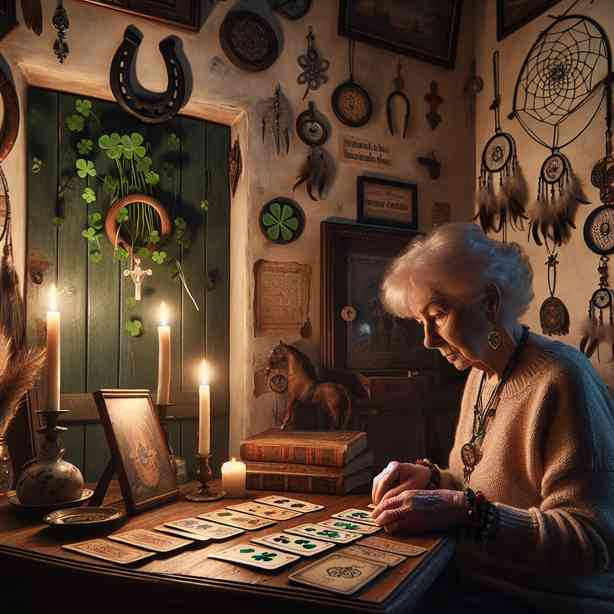
Superstitions have long been a part of human culture, crossing borders and generations. They can evoke reactions that range from light-hearted chuckles to serious contemplations about fate and fate’s influence over our lives. The notion of a “lucky charm” or the belief that certain actions may bring misfortune or luck can be found in nearly every society. Each of us may encounter or even adhere to at least one superstition, however minor it may seem. Have you ever wondered why we hold on to these beliefs, despite the absence of scientific proof? This exploration delves into that one superstition many still follow, illuminating its origins, significance, and the psychological underpinnings that keep it alive in modern society.
To begin with, it’s important to define what superstition really is. Superstitions are beliefs or practices that arise from a fear of the unknown and a desire for control over life’s uncertainties. They often intertwine with cultural traditions, handed down from generation to generation. Most superstitions are rooted in folklore, historical events, or even religious beliefs. For instance, the idea of black cats being bad luck can be traced back to the Middle Ages when black cats were associated with witchcraft. Such associations reflect societal anxieties of the time, and even today, they continue to shape how people respond to certain symbols or actions.
One particularly common superstition involves the act of avoiding walking under ladders. This belief likely has origins in ancient symbolism; the triangle formed by a ladder resting against a wall can symbolize the Holy Trinity in Christianity. Walking through this triangle may have been perceived as blasphemous, thus making it unlucky. Additionally, the practicality of it—ladders can collapse or buckets can fall from them—reinforces the idea that avoiding this action will keep one safe from physical harm. This exemplifies how superstitions often marry practical considerations with deeper, more symbolic meanings.
The significance of these superstitions varies from person to person. Some might find comfort in them, using these beliefs as a coping mechanism for life’s unpredictability. For instance, those who believe in carrying a lucky charm—be it a four-leaf clover, a rabbit’s foot, or a specific crystal—often report feeling more secure when they have it on their person. This overview of the superstition’s impact showcases its ability to provide reassurance in challenging times, allowing individuals to navigate uncertainty with a semblance of control. The act of simply believing in a good luck charm may also facilitate better performances by boosting a person’s confidence.
The psychological aspect of superstitions is quite fascinating. They tap into a deeper human desire for certainty and predictability. Psychologists have conducted numerous studies illustrating how superstitions can enhance performance and reduce anxiety in high-pressure situations. For example, an athlete might perform better if they believe in their lucky socks or shoes. Here, the superstition operates not through tangible influence but through the psychological boost it provides. The belief itself can create a positive feedback loop: believing one will succeed leads to increased effort, and increased effort often leads to success—a win-win situation.
Moreover, superstitions also promote social bonding and shared experiences. When a group of friends engages in a particular ritual before an event—such as a sports game or an important exam—it can strengthen their camaraderie. Even outside these contexts, discussing superstitions allows people to connect over common beliefs and experiences. It’s an intricate web of communal ties, where shared fears and hopes become a glue that holds relationships together.
Despite the way our world has evolved—marked by technological advancements and scientific achievements—superstitions remain relevant. The persistence of these beliefs points to a fundamental aspect of human nature: our desire to find meaning, even in chaos. It’s essential to recognize that while science and logic dominate our modern lives, the human psyche often seeks comfort in the inexplicable. Holding onto one superstition may serve as an anchor in the turbulent sea we all navigate.
Interestingly, some people have started to view superstitions as opportunities for personal empowerment rather than merely as irrational beliefs. By choosing to engage with these practices, individuals can take control of their circumstances in a proactive way. Whether it’s selecting a specific outfit for an important meeting because it feels ‘lucky’ or employing rituals, like crossing fingers, before an event, this engagement transforms superstition into a means of self-empowerment. It encourages individuals to adopt a mindset where they feel they can influence outcomes, which can be incredibly valuable in our fast-paced world.
While change is often welcomed, it is also crucial to understand how embracing or rejecting superstitions can impact us. Rigid thoughts can lead to anxiety and dysfunction. For instance, a deep-seated belief that breaking a mirror will lead to seven years of bad luck may cause someone to conduct themselves in a way that is overly fearful of pursuing opportunities. On the flip side, letting go of certain superstitions can liberate individuals, allowing them to approach life with a more rational perspective. Recognizing the balance between superstition and pragmatism is essential in cultivating a healthy mindset.
In conclusion, the exploration of the superstitions we embrace reveals a complex interplay of culture, psychology, and personal narrative. They represent more than just quirky traditions passed down through generations; they speak to a fundamental human need for meaning and stability in an uncertain world. Whether you find yourself tossing salt over your shoulder or carrying a lucky coin, it’s essential to recognize why these practices hold significance. They can serve as reminders of our shared humanity, highlight the power of belief, and provide moments of connection and understanding. As we navigate the intricacies of life, these superstitions often serve as guiding principles, helping us confront the uncertainties that lie ahead. In a strange way, they remind us that even in a world grounded in logic and science, it is perfectly human to shelter our hopes and fears in the comforting embrace of these ancient beliefs.


